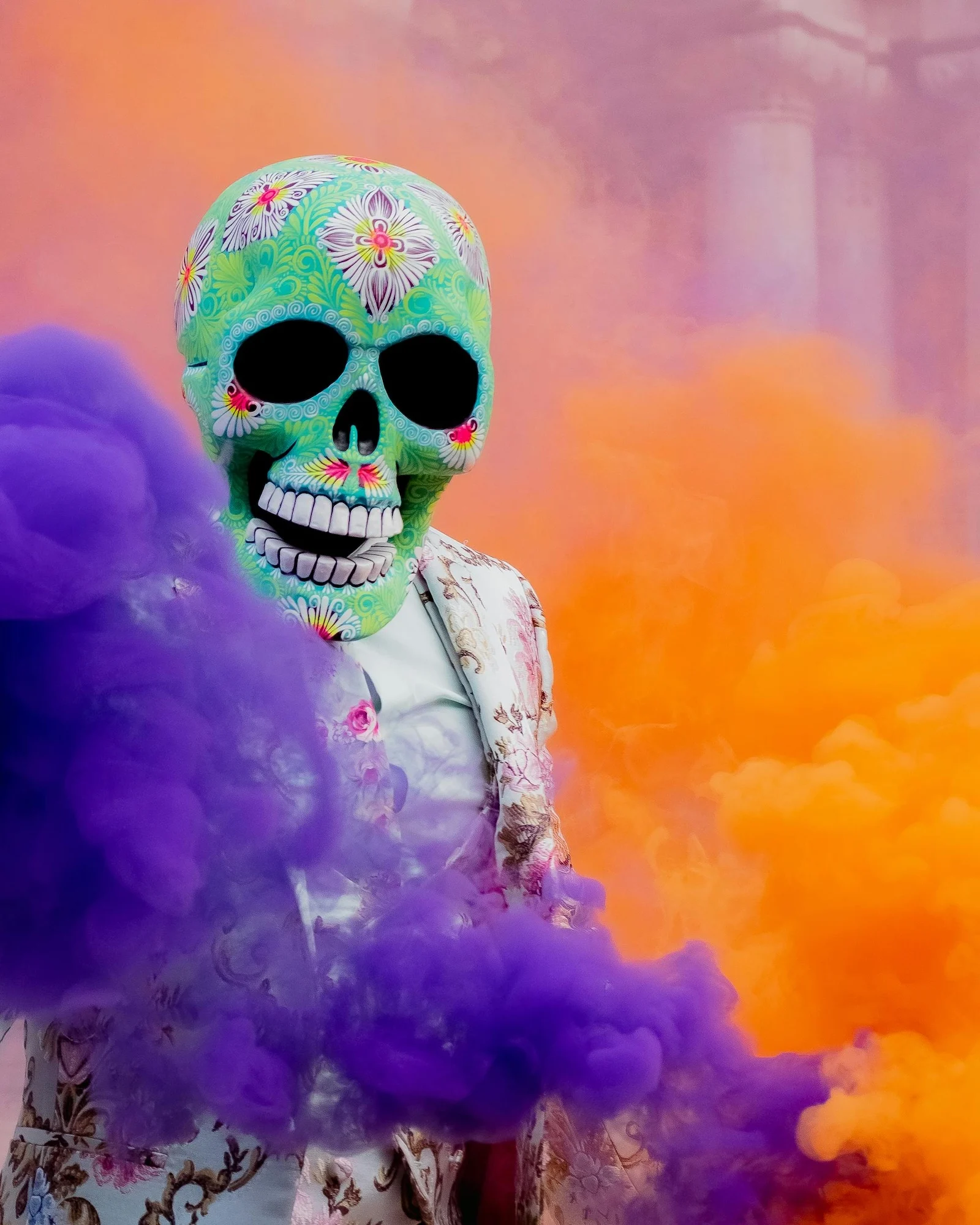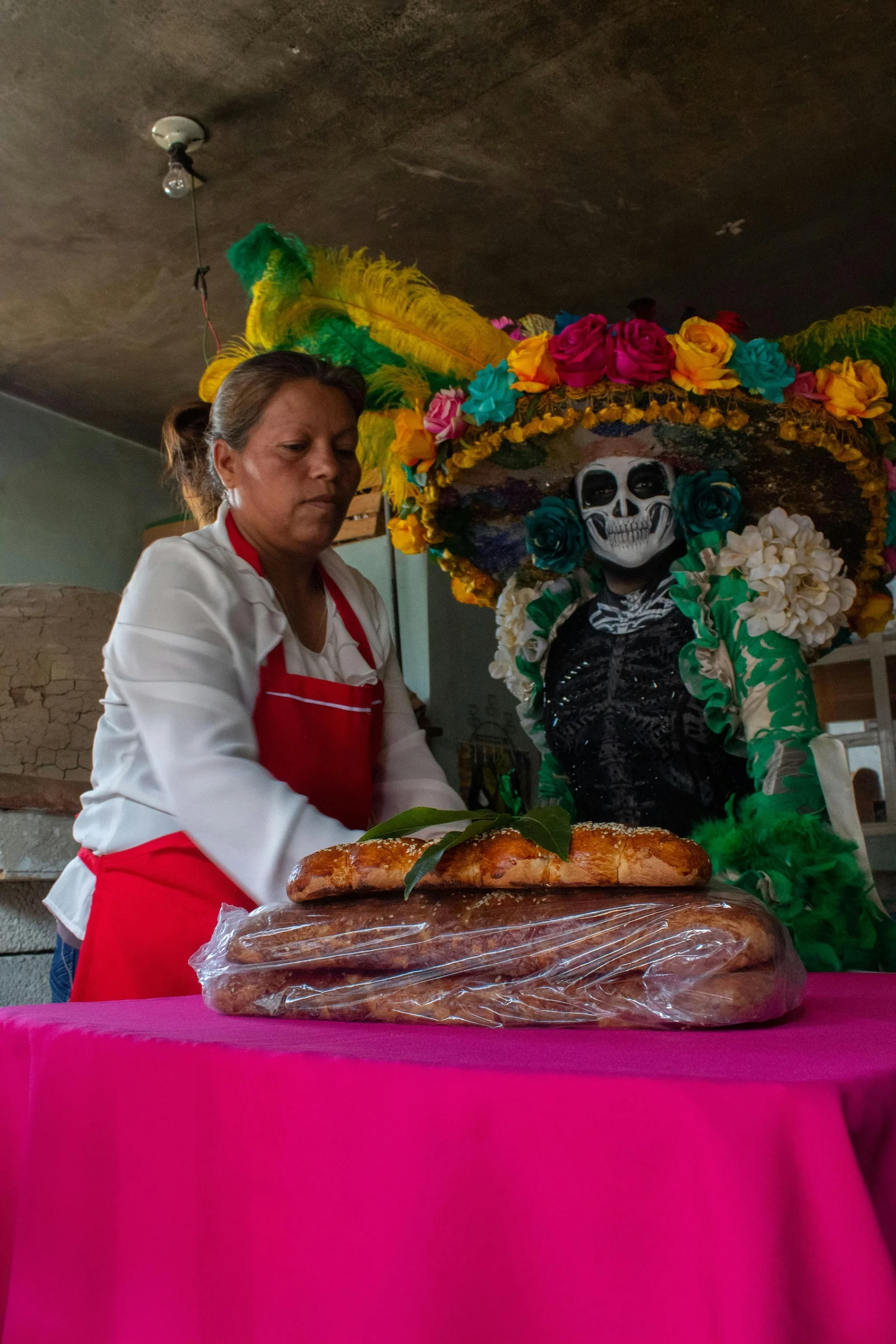The Day of the Dead (Día de los Muertos) is a Mexican holiday like no other. Celebrated from October 31 to November 2, it’s an explosion of color, life, and community in honor of those who’ve passed on.
But this isn’t some quiet, candlelit vigil—it’s a joyous gathering where the living invite their departed loved ones to join the celebration. As a traveler, stepping into this tradition is like getting a front-row seat to one of the most meaningful cultural experiences you can have.

Featured Image Credit: Pexels / Carlos Reyes
What Is Day of the Dead?
Unlike the Western traditions that focus on mourning, Day of the Dead is about celebrating life and honoring the deceased with altars, food, music, and dance. The idea is that the spirits of those who’ve passed return for a few days to enjoy the things they loved in life—whether that’s their favorite foods, music, or even a good cigar. Families build ofrendas, or altars, adorned with marigolds, photos, candles, and mementos to invite their loved ones back for the party.
When Does Day of the Dead Happen?
The festivities start on October 31 and run until November 2, with each day marking something different. November 1 is Día de los Inocentes, dedicated to children who have passed, while November 2 is for adults. Depending on where you are, these days can look different, but the overall vibe is the same: life is meant to be celebrated, and death isn’t something to fear but to respect and embrace.

Image Credit: Pexels / Genaro Servín
Where to Celebrate
For travelers, some places in Mexico stand out as Day of the Dead hotspots. Mexico City has grown famous for its massive, colorful parades—especially since the 2015 James Bond movie, Spectre, immortalized its vibrant celebration. Expect giant floats, painted faces, and crowds lining the streets. But for something a bit more intimate and traditional, head to Oaxaca or Michoacán, where locals still hold on to the holiday’s spiritual roots. In these smaller towns, you’ll see more authentic altar displays, family gatherings, and candlelit cemeteries that truly capture the spirit of the holiday.
What You’ll See: From Altars to Parades
One of the most striking parts of Day of the Dead are the elaborate altars (ofrendas) that families build in their homes or at gravesites. These aren’t just decorative—they’re deeply personal, filled with the favorite foods, drinks, and mementos of the deceased. Expect to see sugar skulls, pan de muerto (sweet bread), and candles galore. The holiday is also famous for its use of calacas (skeletons) and calaveras (skulls), symbolizing the joy of life and the inevitability of death.
Mexico City’s Parade: Bigger, Louder, and Brighter
If you’re looking for a big, bold experience, Mexico City’s Day of the Dead parade is a must-see. With dancers in elaborate costumes, giant skeleton floats, and tens of thousands of spectators, it’s the perfect fusion of ancient tradition and modern spectacle. The parade has become such a hit that it now draws travelers from around the world, so be prepared for some serious crowds. But the energy is infectious—everyone’s there to celebrate life, death, and everything in between.
Oaxaca: Where Tradition Lives On
For something a bit more low-key but equally mesmerizing, Oaxaca is the place to be. Here, you’ll find more intimate celebrations, where the entire city comes together to build ofrendas, decorate cemeteries, and enjoy music in the streets. The Panteón General (the city’s cemetery) is a highlight, where families spend the night keeping vigil, surrounded by flickering candles and marigolds. It’s a powerful reminder that this holiday is about bridging the gap between the living and the dead in the most beautiful way possible.
What to Eat

Image Credit: Pexels / Yo Soy Flashh
Food plays a huge role in Day of the Dead, and if you’re a foodie, you’re in for a treat. The holiday’s signature dish is pan de muerto, a soft, sweet bread dusted with sugar. You’ll also find tamales, mole, and atole (a warm, thick drink made from corn). These foods are not just for the living—many of them are placed on the ofrendas as offerings to the spirits, so don’t be surprised if you see food left out at grave sites or altars.
How to Prepare for the Crowds
Day of the Dead is becoming more and more popular with international travelers, so book your trip early. Flights and accommodations fill up fast, especially in places like Mexico City and Oaxaca. If you’re planning to attend the big parade in Mexico City, arrive a day or two before to secure a good spot. In smaller towns like Oaxaca, be sure to explore the markets and public squares, where the atmosphere is electric, and the locals are incredibly welcoming.
The Heart of Day of the Dead
At its core, Day of the Dead is about keeping memories alive. Families share stories, photos, and meals, ensuring that their loved ones are never truly gone. It’s a touching reminder that death is part of life, and that the dead live on as long as they are remembered. For travelers, witnessing this beautiful tradition is a powerful and humbling experience, one that lingers long after the holiday is over.
How to Participate Respectfully
If you’re attending Day of the Dead as a traveler, remember that this is a deeply personal holiday for many families. Be mindful of how you interact with the traditions. It’s okay to take photos at parades and public altars, but if you’re visiting cemeteries or family gatherings, ask permission first. Take the time to learn about the meaning behind the traditions, and approach the celebration with respect and gratitude for the chance to witness something so intimate and beautiful.
Making the Most of Your Trip
Day of the Dead is an experience unlike any other, and to truly immerse yourself, try to participate in the local customs. Join a face-painting workshop, attend a cooking class to learn how to make traditional dishes, or visit local museums that highlight the holiday’s origins. Whether you’re wandering the decorated cemeteries of Oaxaca or dancing along with the crowds in Mexico City, Day of the Dead offers a glimpse into Mexico’s soul—one that will leave you with a deeper understanding of life, death, and the beauty in between.
Read More
18 Countries That Don’t Want American Visitors
It’s time for a reality check, American travelers. As you pack your bags and head overseas, ready to stamp your passport, it’s becoming glaringly obvious that not every destination is thrilled to see you. 18 Countries That Don’t Want American Visitors
18 High-Crime Cities in the US You Should Avoid
American cities promise rich culture and unforgettable experiences, but rising crime rates can catch travelers off guard. This guide helps you stay safe while fully enjoying your adventures. 18 High-Crime Cities in the US You Should Avoid
What Cruise Lines Don’t Want You to Know: 20 Candid Insights
Thinking about booking a cruise for your next getaway? Let’s have a real talk first. While cruising might seem like a breezy way to see the world, there are a few not-so-sunny truths that might make you reconsider. What Cruise Lines Don’t Want You to Know: 20 Candid Insights
Featured Image Credit: Pexels / Carlos Reyes.
The content of this article is for informational purposes only and does not constitute or replace professional advice.
The images used are for illustrative purposes only and may not represent the actual people or places mentioned in the article.
For transparency, this content was partly developed with AI assistance and carefully curated by an experienced editor to be informative and ensure accuracy.
Tips for Trip Success
Book Your Flight
Find an inexpensive flight by using Kayak, a favorite of ours because it regularly returns less expensive flight options from a variety of airlines.
Book Your Hotel or Special Accommodation
We are big fans of Booking.com. We like their review system and photos. If we want to see more reviews and additional booking options, we go to Expedia.
You Need Travel Insurance!
Good travel insurance means having total peace of mind. Travel insurance protects you when your medical insurance often will not and better than what you get from your credit card. It will provide comprehensive coverage should you need medical treatment or return to the United States, compensation for trip interruption, baggage loss, and other situations.Find the Perfect Insurance Plan for Your Trip
PassingThru is a participant in the Amazon Services LLC Associates Program. As an Amazon Associate I earn from qualifying purchases.
To view PassingThru’s privacy policy, click here.

Boost your SEO with guest posting
Monday 14th of October 2024
This answered a lot of questions I had—thanks!